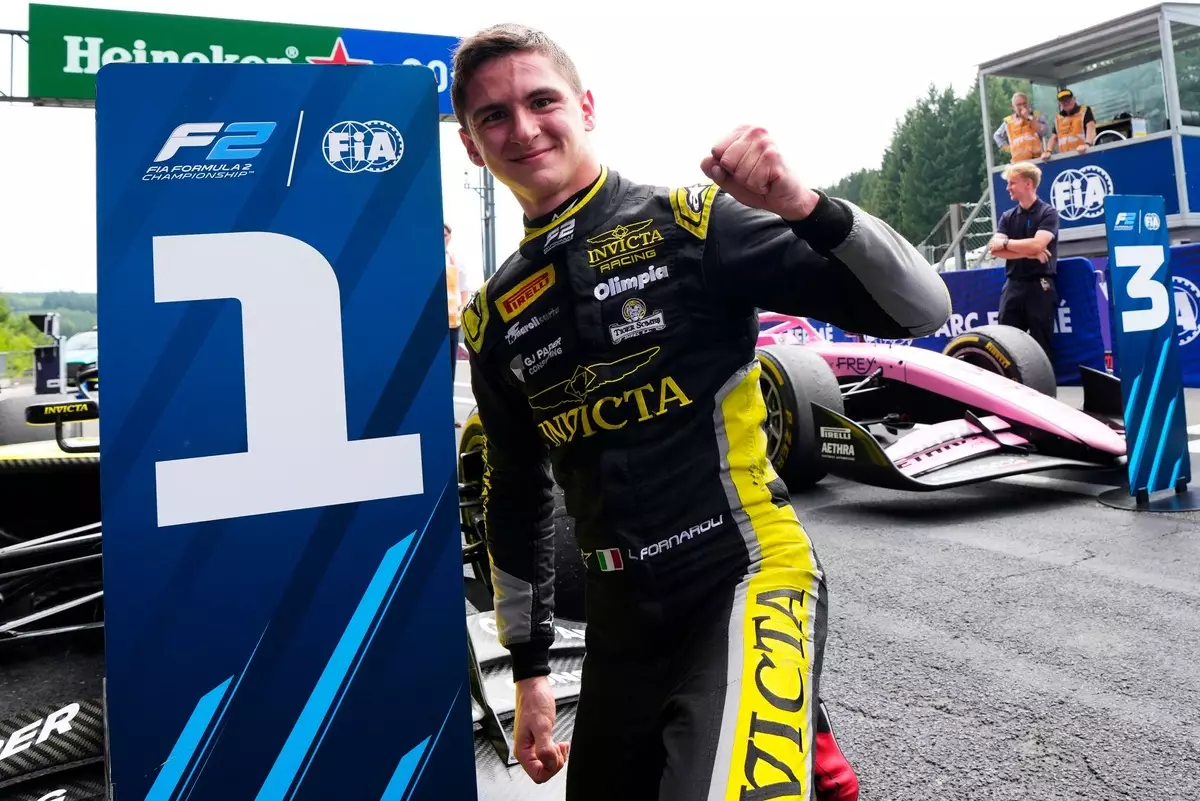In the fast-paced universe of motorsport, where flashy personalities and outspoken drivers often overshadow pure talent, Leonardo Fornaroli emerges as a remarkable anomaly. He is currently leading the Formula 2 championship in his debut year—an achievement that signifies immense potential and adaptability. Yet, what truly sets Fornaroli apart is his conspicuous absence from the radar of Formula 1 development programs. This unorthodox path to the top tier of racing raises eyebrows and presents a compelling case for reevaluating what qualities truly define a future F1 star. Unlike many of his peers, Fornaroli does not rely on a vibrant social media presence or a flamboyant personality to garner attention; his strength lies in a quiet, relentless drive for consistency and precision—traits that are arguably more vital for long-term success at the highest level.
The Paradox of Visibility and Value
Most drivers scouted early by F1 academies tend to follow a predictable trajectory: success in F3, a strong debut in F2, and then a swift jump into Formula 1. Interestingly, Fornaroli defies this model. His recent rise has been marked by a steady accumulation of results without the backing of a prominent team affiliation or a flashy media profile. Historically, this approach might have been seen as a barrier rather than an opportunity in F1 recruiting circles, which often favor candidates with established backing or continental acclaim. However, Fornaroli’s case challenges this paradigm. His ability to maintain composure and execute race strategies flawlessly demonstrates a maturity rarely achieved by drivers so early in their careers. It prompts the question: Should teams prioritize charisma and brand-building, or focus on drivers whose technical proficiency and mental resilience make them invaluable for car development?
The Formula 2 Leader Who Could Reshape Talent Scouting
James Robinson, the Invicta team principal, articulates a compelling argument: Fornaroli’s talent and approach resemble the pioneering “Moneyball” strategy made famous by baseball, where data-driven decision making uncovered hidden stars overlooked by conventional scouting. Robinson admires Fornaroli’s capacity to deliver consistent lap times, extreme focus, and resilience under pressure—all qualities of a driver who could significantly impact an F1 team’s development process. Despite the lack of a formal F1 contract or academy membership, Robinson sees Fornaroli as a prime candidate for teams seeking a reliable, unflappable driver capable of providing stable feedback and performing under the highest stakes. In an era increasingly dictated by data analysis and engineering nuances, Fornaroli’s understated but effective style could outperform more outspoken competitors with flashy resumes.
The Understated Genius: A Profile of Pure Skill
Fornaroli’s journey to the top echoes a narrative of perseverance and quiet excellence. He won last year’s F3 championship without recording a single race victory—a feat that defies conventional wisdom about what it takes to reach the pinnacle of junior racing. His subsequent leap into F2 has seen him striking victories, notably at the Hungaroring, solidifying his credentials. What separates him from many peers is not just his results but his approach to racing: calculated, disciplined, and adaptable. In a sport where confidence often manifests through bravado, Fornaroli exemplifies that restraint and consistency can be more powerful than spectacle. His personality might not turn heads on social media, but in the cockpit, his calmness under pressure is an asset that could revolutionize how F1 teams select future talent.
Rethinking What Makes a Star in Modern Motorsport
The current F1 landscape, with its tightly curated development programs, often dismisses drivers who lack immediate visible backing or cinematic charisma. Yet, Fornaroli challenges this status quo. His apparent invisibility in the F1 pipeline is less a reflection of deficiency and more an indication of a broader disconnect between traditional scouting methods and what modern teams really need. With the sport embracing advanced engineering and data analytics, drivers who can provide consistent, high-quality feedback and adapt seamlessly to complex car systems will outperform those who rely solely on raw talent or bravado. Fornaroli embodies these qualities, and his emergence could be the start of a paradigm shift—an acknowledgment that true racing brilliance manifests not through noise but through impeccable execution.
The Path Ahead for a Quiet Contender
As the summer break approaches, the question remains: why hasn’t Fornaroli secured a spot in an F1 team? His performance in F2 has convincingly demonstrated that he possesses the attributes necessary for success at the highest level. Robinson’s candid assessment—referring to Fornaroli as a “Moneyball” type—pierces through the surface-level narratives that dominate motorsport recruitment. It advocates for a more pragmatic, data-driven approach to driver selection, emphasizing consistency, technical insight, and mental resilience over superficial traits. Fornaroli’s trajectory underscores an essential truth: in the complex ecosystem of Formula 1, those drivers who quietly master their craft often have the greatest potential to redefine the sport’s future stars. If teams open their eyes to this reality, they may very well discover that their next world champion has been racing quietly in the shadows, waiting for recognition.

